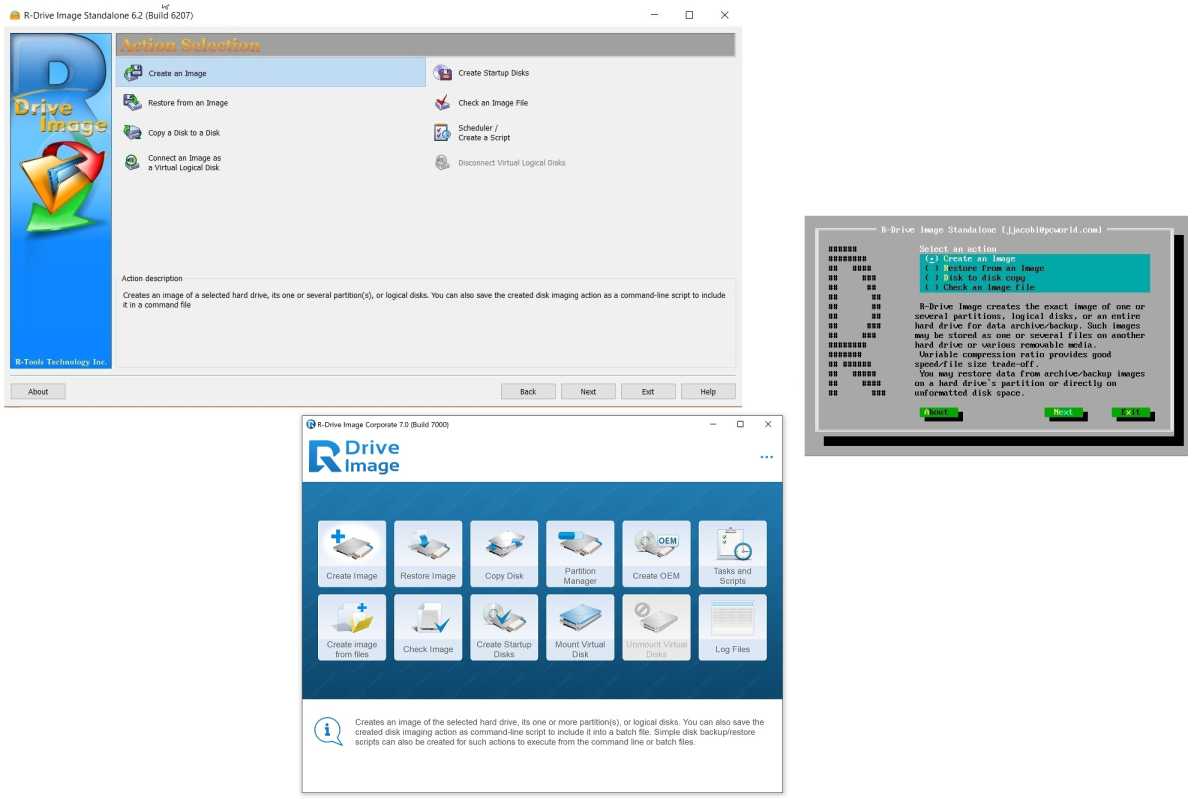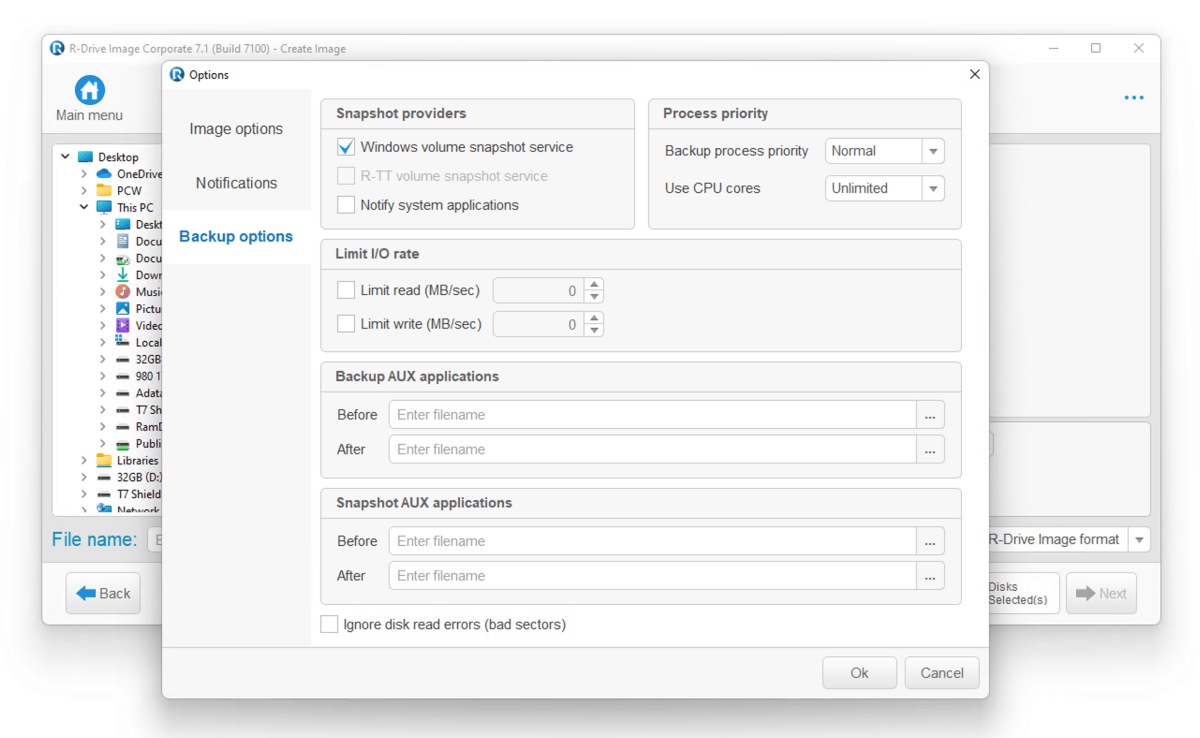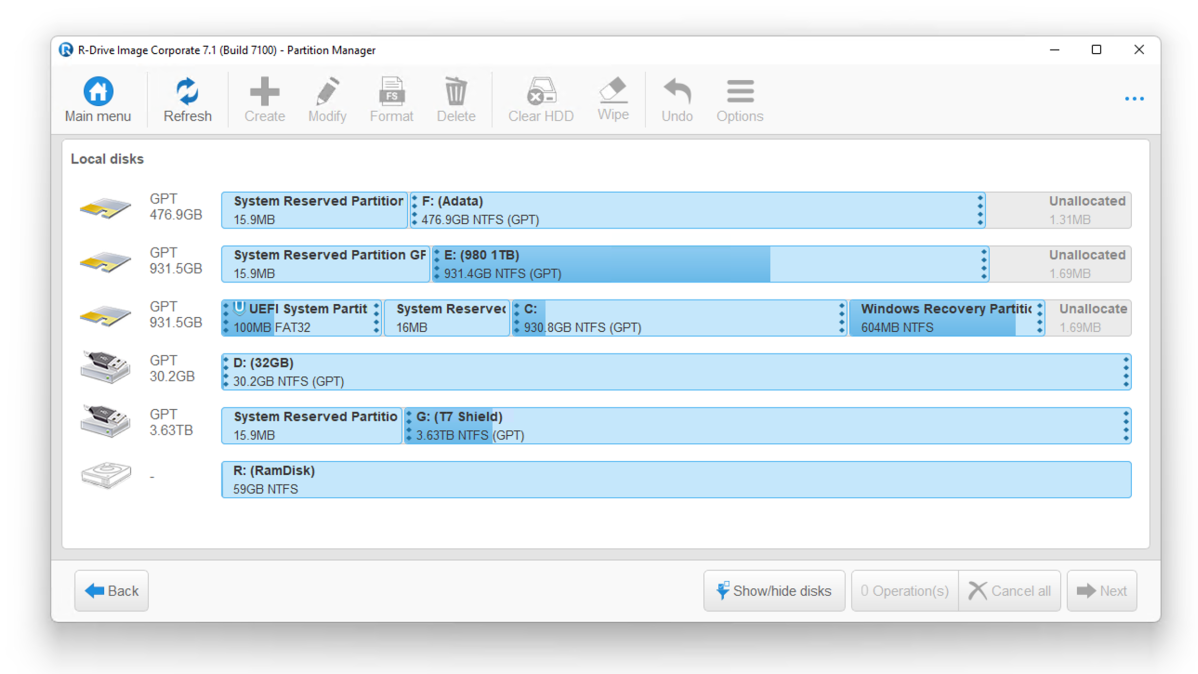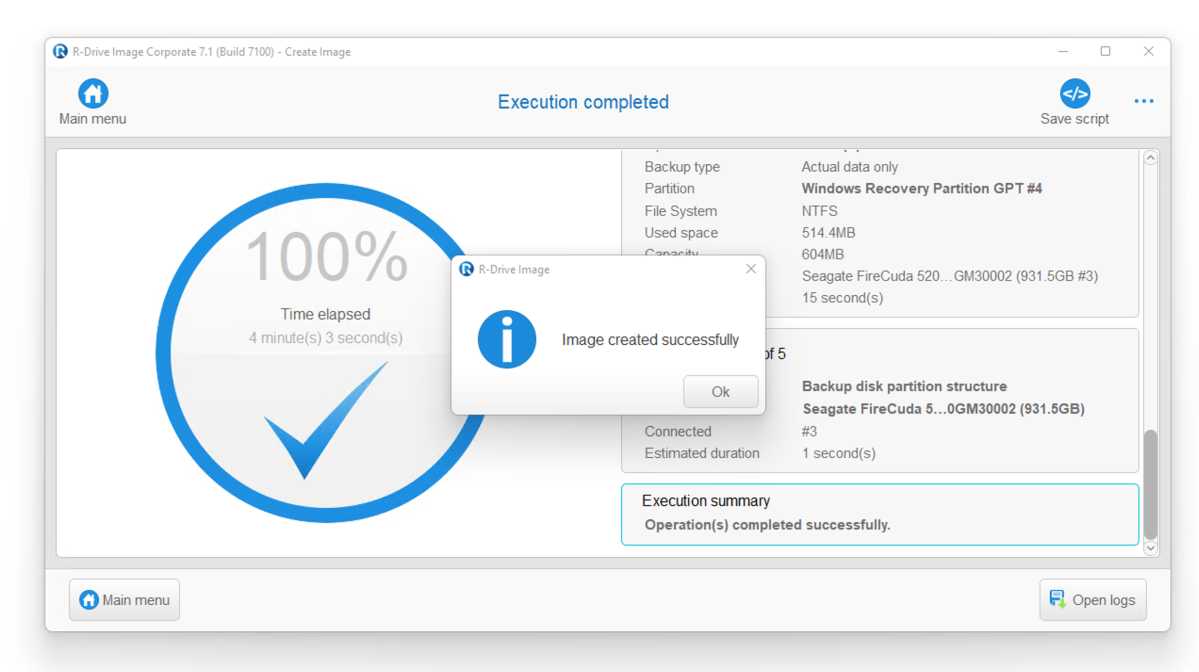 At a glance
At a glanceExpert's Rating
Pros
- Super-reliable, fast disk and partition imaging
- File and folder backup
- Partition manager
- Lean-and-mean Linux and WinPE boot media
- Supports Microsoft’s nearly ubiquitous VHD format
Cons
- Would like to see multiple destinations per job
Our Verdict
Quick, easy, reliable… Version 7.1 of R-Drive Image adds WinPE boot-disc support and VHD compatibility to an already impressive arsenal of features. Our recommended backup and disaster recovery solution.
Best Prices Today: R-Drive Image 7
With a variety of free backup programs available, including those that ship with your operating system, R-Drive Image is a program I’d pay for. That’s about as great a compliment as I can offer to a piece of software.
The reason is simple. In all the years I’ve been using the low-resource-consuming program (nearly 20), it’s never failed once at its primary task of creating images of partitions or disks. Nearly every other backup program I’ve used has hiccupped in one way or another. In fact, I use R-Drive Image for backing up my backups and failing hard drives, where you may not get more than one shot at it.
This review is part of our ongoing roundup of the best backup software. Go there for information on competing products and how we tested them.
Version 7 introduced a friendlier interface; file and folder backup; and a partition manager that made the program significantly more versatile. If the company ever rolls in its excellent R-Studio recovery software, the boot disk count in my repair kit will go down to exactly… one. Now there’s a new version that expands those capabilities even further.
R-Drive Image: What’s new
Version 7.1 addresses one of my main complaints about R-Drive Image in the past: its complete reliance upon its own proprietary images. While the program has never glitched for me, my preference with any backup program is to keep a couple of backups around in VHD (Virtual Hard Disk) format, which you can mount using nothing but the Windows operating system (or macOS with the help of VirtualBox or other software).
Note that version 7 did support the high-end Hyper-V VMDK format at the corporate level.
In all the years I’ve been using this low-resource-consuming program (nearly 20), R-Drive Image has never failed once at its primary task of creating images of partitions or disks.

The other major good news for Windows users is the addition of a WindowsPE boot disc. The Windows Pre-install Environment (Windows 10) may offer some Windows-only drives not available from Linux and allow booting on some systems with Secure Boot enabled in the BIOS.
There’s also now the option to convert partition layouts from MBR (Master Boot Record) to GPT (GUID Partition Table) and vice versa. I’ve never had the need, but some systems boot better using one or the other. AES-XTS image encryption is now supported and you can also resize the C: (OS) partition without having to reboot afterwards. Lastly, there is a new option to check multiple images for errors with a single command.
R-Drive Image: Interface
R-Drive Image maintains the new interface that was introduced with version 7.0. The old version was efficient, but dated in appearance. The current GUI not only has a more modern look, the workflow should be a tad more intuitive to the average user. Below you can see the older version (upper left), as well as the new one (bottom), plus my personal favorite: the character-based interface that I use to intimidate customers looking over my shoulder.

Both the new GUI and DOS-like interfaces are available from the Linux boot disc, however the WinPE version features the new GUI only. Alas, the new partitioning facilities are only available from the modern GUI. Honestly, I can’t be too sore about the omission, as porting it to the older DOS-like GUI would likely be a lot of work. But, hey, R-Tools, if you’re ever bored….
R-Drive Image: Features
R-Drive Image will create full (all data), incremental (all data changed since the last image), or differential (all data changed since the original full image) images. It will also verify them, copy disk-to-disk (cloning), and mount images as virtual disks that you can browse and recover individual files and folders from. It understands Microsoft’s FAT (16/32), NTFS, and exFAT formats; Apple’s HFS/HFS+, and APFS; as well as the Little and Big Endian variants of UFS1/UFS2 and Ext2/Ext3/Ext4 FS (Linux), and ReFS.
Other file systems are supported on a byte-by-byte (all sectors are backed up—containing data or not) basis with no preview or file-level access from within the program. R-Drive Image also supports hardware RAID (as single volumes) and software RAID: Windows, Apple, and Linux mdadm. You can save your images just about anywhere and to just about any media. The program even burns CDs and DVDs on its own. Don’t laugh—optical media is still in widespread use for corporate archiving.

R-Drive Image 7.1 options
.Jon L. Jacobi
Related features include email notifications on job completion; running programs based on the success or failure of the process; the ability to bypass file or disk errors and continue the job (great for recovering data); using Windows or its own proprietary shadow service (flushing and locking data); as well as task throttling (reduced CPU usage).
Scheduling is supported, and I like that it leverages the existing Windows task scheduler. Too many vendors add their own for no particularly good reason. It’s also nice reassurance that there’s no ongoing telemetry (communications between the program and the company) in play. Not to be paranoid, but that’s something you might want to consider when providing low-level access to your data.
Before version 7.0, R-Drive Image would back up only entire partitions or drives. Now it can create the same type of image files from groups of files or folders you select. You can’t use these for disaster recovery, just to restore said files or folders. This allows for fast backup of your essential data and can reduce storage requirements drastically.

R-Drive Image 7.1’s partition manager
Jon L. Jacobi
R-Drive Image also features a partition manager, which allows you to delete, secure wipe, create, and re-size partitions without leaving the R-Drive Image interface. As mentioned, it’s available only from the graphic interfaces (Windows native and Linux/WinPE boot disks). Sigh.
R-Drive Image: Performance
As I’ve said, R-Drive Image has been 100 percent reliable for me over the years. It can even skip bad sectors and copy what remains, though this can be an exceedingly long procedure if you have a lot of read failures. Aside from that, R-Drive Image is quite fast. Version 7.x averaged around 90MB/s reading, compressing, and writing 650GB of data to a SATA SSD in my testing, as well as to a network location.
Just FYI, R-Drive Image consistently over-estimates the time a job will take initially. Sometimes by a very large amount. No doubt it’s assuming a worst-case scenario, such as backing up non-compressible data to an old, slow hard drive. If you see an exorbitant time, click start and you’ll likely be pleasantly surprised at the speed of the backup.

R-Drive Image 7.1 completes its multi-partition backup task successfully. I’ve never seen a job-failed message unless the hard drive was beyond hope.
Jon L. Jacobi
When I say R-Drive Image consumes few resources, I’m not kidding. The minimum system requirement is only that the CPU be Intel-based. If you’re using older hardware, R-Drive Image is by far your best bet. I wrote most of this article with a very large backup running on my 2015 iMac (running Windows via Boot Camp) and forgot it was in progress. Note that the company’s R-Studio supports Apple Silicon, so perhaps there’s ARM support in R-Drive Image’s future.
Oddly enough, I did get my first-ever R-Drive Image error code with version 7.0 (7000 build) when selecting the modify function of the partition manager on an external, exFAT-formatted USB drive. It was non-fatal, which indicates superior error-checking, and R-Tools shipped me a fix (build 7001) almost immediately. Yes, the company is that dedicated and responsive.
While R-Drive Image offers just about every option and feature you can think of for local and network use, I’d still lobby for multiple-destinations per job and support for online storage services. Add those and I’m thinking it gets another half star.
Note that I tested a pre-release version of 7.1.
Should you buy R-Drive Image?
As I said, I came close to awarding R-Drive Image 7.1 a 5-star rating. It matches the competition in ease of use and features, and is a tier up in terms of reliability and hardware/OS compatibility. Put bluntly, it’s the one you want.
Now friendlier and more compatible thanks to VHD and WinPE support, it’s as close as you can get to a one-stop solution backup and partition solution. While not perfect, the program’s features and reliability as well as the company’s dedication to perfection came close to earning it my first 5-star rating. I’d still like multiple destinations per job, but R-Drive Image is the one you want.
Editor’s note: Because online services are often iterative, gaining new features and performance improvements over time, this review is subject to change in order to accurately reflect the current state of the service. Any changes to text or our final review verdict will be noted at the top of this article.


